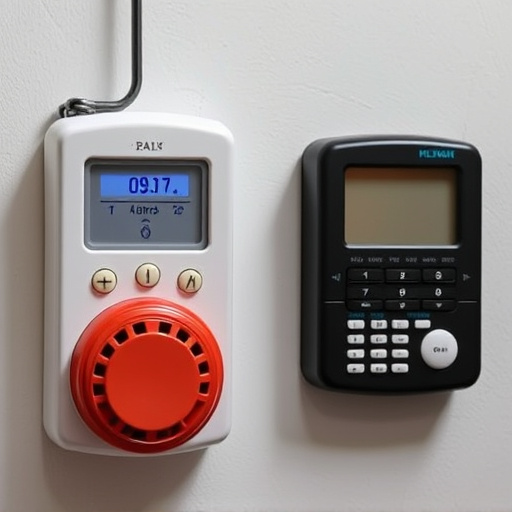Personal alarms with high-pitched (120+ decibels), loud sounds are crucial for emergencies. Consider distance (up to 60 meters) for crowded or outdoor settings. Key features include easy activation, compact design, durable construction, and water resistance. Regularly test battery life and sound projection to ensure effectiveness. Choose a device with a reliable 100-foot range, manual buttons or motion activation, and consistent testing for optimal safety.
In today’s world, personal safety is paramount. Unexpected emergencies can strike anywhere, making it crucial to be prepared with effective personal safety devices. This comprehensive guide explores essential tools designed to ensure your well-being during dire situations. We delve into understanding the key components, from powerful alarm sounds that can travel up to 100 decibels (the best personal alarm sound distance for maximum attention) to convenient portable designs. Learn about testing and maintenance routines to guarantee their reliability when it matters most.
- Understanding Personal Safety Devices
- Key Features to Look for in an Alarm
- Testing and Maintenance: Ensuring Effectiveness
- Best Practices for Emergency Situations
Understanding Personal Safety Devices
Personal safety devices are a crucial tool for anyone facing emergency situations, providing a sense of security and peace of mind. These devices are designed to attract attention, signal distress, and, in some cases, even deter potential threats. One of the most common types is a personal alarm, which typically features a loud, high-pitched sound that can be easily heard from a distance.
When choosing a personal safety device, considering the best personal alarm sound and distance it can project is essential. High-decibel alarms (typically around 120 decibels or more) are recommended to ensure maximum effectiveness in drawing attention and startling potential attackers. The range of projection also varies; some devices offer a powerful enough signal to reach up to 60 meters, providing a safety net in crowded areas or during outdoor activities.
Key Features to Look for in an Alarm
When choosing a personal alarm, several key features should be top of mind. Firstly, consider best personal alarm sound: it needs to be loud enough to startle and attract attention quickly. In an emergency, every second counts, so a high-decibel alarm is essential. Secondly, distance is critical; ensure the alarm has a range that allows for effective communication in case of distress. Some models offer up to 100 decibels, which can be heard from several hundred feet away, providing peace of mind in potentially dangerous situations.
Additional features to look out for include easy activation and deactivation mechanisms, compact design for portability, and durable construction to withstand outdoor elements or rough handling. Water resistance is another valuable attribute, especially if you plan to carry the alarm while hiking or swimming.
Testing and Maintenance: Ensuring Effectiveness
Testing and maintaining your personal safety device is paramount to ensure its effectiveness during an emergency. Regularly practice the activation mechanism to become familiar with it, especially if you have never used a particular model before. This ensures that when the time comes, you can react quickly and efficiently. Additionally, check battery life and replace them as needed, as drained batteries can render your device useless in critical situations.
For personal alarms, testing the sound distance is crucial. The best personal alarm should have a loud, piercing tone that can attract attention from a considerable distance. This allows you to signal for help even if you’re unable to move or speak due to shock or injury. Keep in mind that factors like environmental noise and proximity to other people or objects can affect the actual range of the sound.
Best Practices for Emergency Situations
In emergency situations, staying calm and knowing what to do can save lives. One of the best practices is to always carry a personal safety device, such as an alarm, with you at all times. When faced with danger, quickly activating your personal alarm can startle assailants and attract attention from bystanders or authorities. The best personal alarm should have a loud, piercing sound that can be heard up to 100 feet (30 meters) away—this is considered the optimal distance for maximum effectiveness in an emergency.
Additionally, ensure that your alarm has various activation modes, like manual push buttons or motion-activated triggers, allowing you to respond swiftly and adapt to different scenarios. Regularly test the device to verify its functionality, ensuring it’s always ready when needed. Remember, preparedness is key; carrying and regularly testing a personal safety device can significantly enhance your chances of escaping dangerous situations safely.
Personal safety devices are essential tools for emergency situations, empowering individuals to protect themselves effectively. By understanding key features like the best personal alarm sound and distance, testing and maintaining these devices, and adopting best practices, you can ensure your safety and peace of mind. Choosing the right personal alarm can make all the difference when seconds count.
